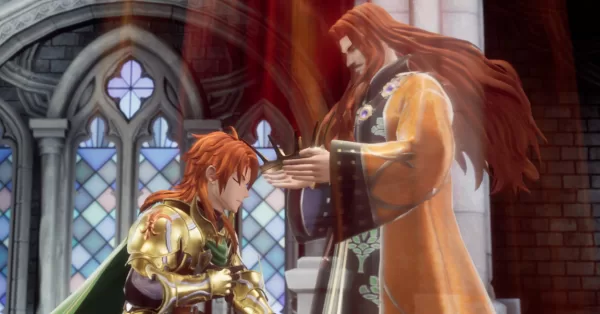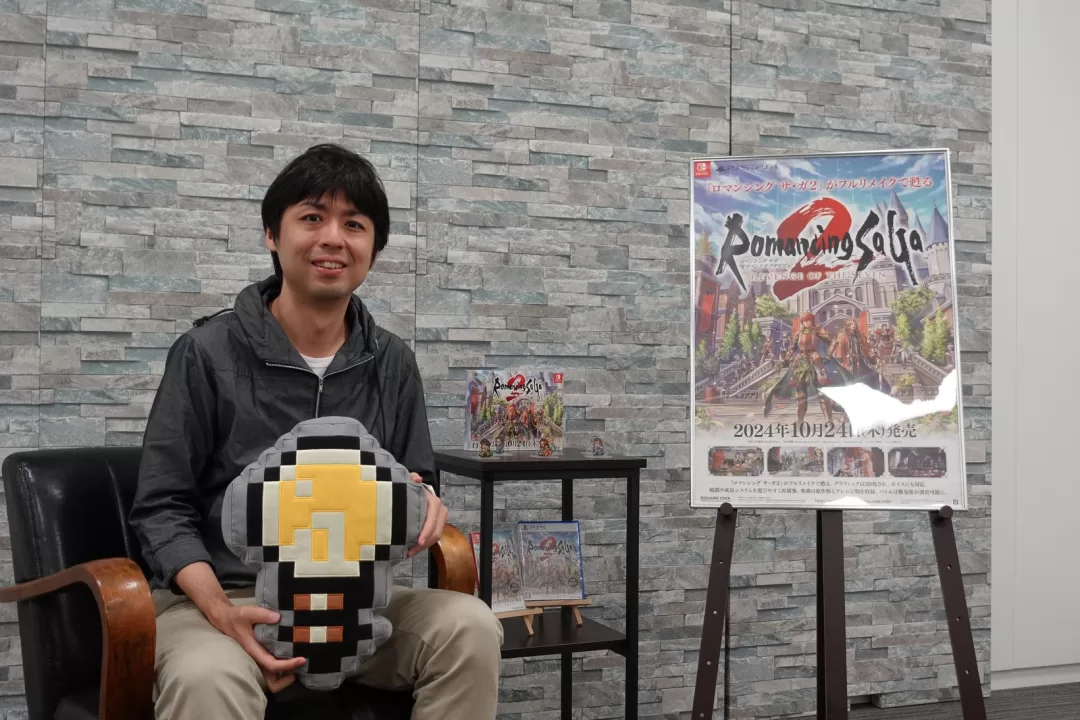Romancing SaGa 2: Revenge of the Seven Producer Shares How They Made the Remake Accessible
Romancing SaGa 2 producer Tatsuke Shinichi shared how this remake will be a great starting point for newcomers.

After getting to try out Romancing SaGa 2: Revenge of the Seven, I also got to attend a roundtable interview with producer Tatsuke Shinichi. As I was highly impressed by the remake’s gameplay mechanics, I asked Shinichi about the game’s combat system.
Revenge of the Seven is a remake of a JRPG from the 90s that has become a classic in its own right thanks to its unique gameplay mechanics such as the glimmer system. For the remake, the developers aimed to make the game much more accessible, all while overhauling the combat system to make it more engaging.
Based on my time with the game, the combat system definitely shined as it had lots of familiar RPG and tactical mechanics, all while having its own identity. One thing I also noted is that, while engaging, there’s so much going on in the game given how many elements there are in combat encounters.

Romancing SaGa 2: Revenge of the Seven producer Tatsuke Shinichi at the Square Enix office.
While my experience with the genre helped me get a grasp of how the game worked, I wondered if that would also hold true for newer players. Thus, I asked Shinichi how they made the remake more accessible even with the sheer number of elements.
“There are a lot of interesting and unique gameplay mechanics in the original Romancing SaGa 2, and in the remake as well,” said Shinichi. “But because of that, we made sure that players didn’t have to learn all of these mechanics all at once. We made sure that the system walked them through little by little so that they had some time to just take it all in slowly but surely.”
In my hands-on session, I got various tutorials that helped me get up to speed with how the game flows. Despite this, I found the pace to still be quite fast, meaning I had to learn more things as I fought tougher enemies. Not to mention that having to control up to five characters in a party can feel a bit daunting to learn given the various weapon and element types, along with the leveling mechanic.

Thankfully, that won’t be the case for the game’s release as the Revenge of the Seven free demo (which is available to download now) won’t immediately give players five characters to control.
“For the consumer demo that’s already released, you get to play from the beginning of the game, which starts the combat section with a two-person party as opposed to the five-person party that you usually play in the game,” said Shinichi. “We thought that if we had players start with a five-character party, that would be a bit too much and it would probably not help the players understand the mechanics and the combat of the game.”
Another way that the developers made the game more accessible is by adding plenty of tutorials – something that was sorely lacking in the original version. Shinichi explained:
“The reason why we wanted to do that also was because the original release of Romancing SaGa 2 wasn’t user-friendly as there weren’t any tutorials. It kind of forced players to the game’s mechanics on their own. But for this remake, we did implement a lot of tutorials so that players get the opportunity to learn and take in these gameplay elements little by little.”

Finally, Shinichi wrapped up his quick talk on accessibility by mentioning the fact that enemy weaknesses are finally shown clearly, as they are in many modern RPGs.
“In the original release, the enemies did have weaknesses, but they weren’t displayed for players in combat,” said Shinichi. “The weakness system in the original release of Romancing SaGa 2 is still in the remake, but we simplified it so that the breakdown of the weapons and elements enemies are weak to is shown.”
This fact was something I didn’t take note of during my playthrough, but only after the interview did I find out that the original game did not display weaknesses. As such, players had to note down enemy weaknesses on their own or consult a guide online.
Given all of these features, coupled with its engaging gameplay, Romancing SaGa 2: Revenge of the Seven is shaping up to be a great entry point to the series and a game that JRPG fans may want to check out upon launch.
Romancing SaGa 2: Revenge of the Seven will be released on PS5, PS4, Switch, and PC via Steam on October 24, 2024.


